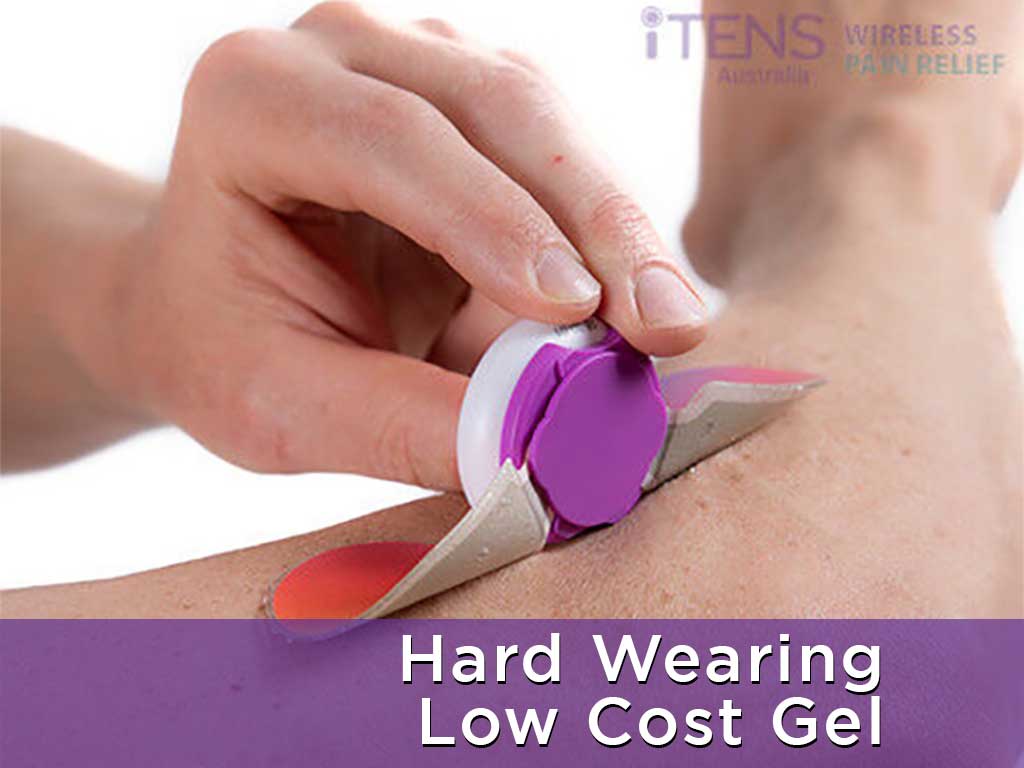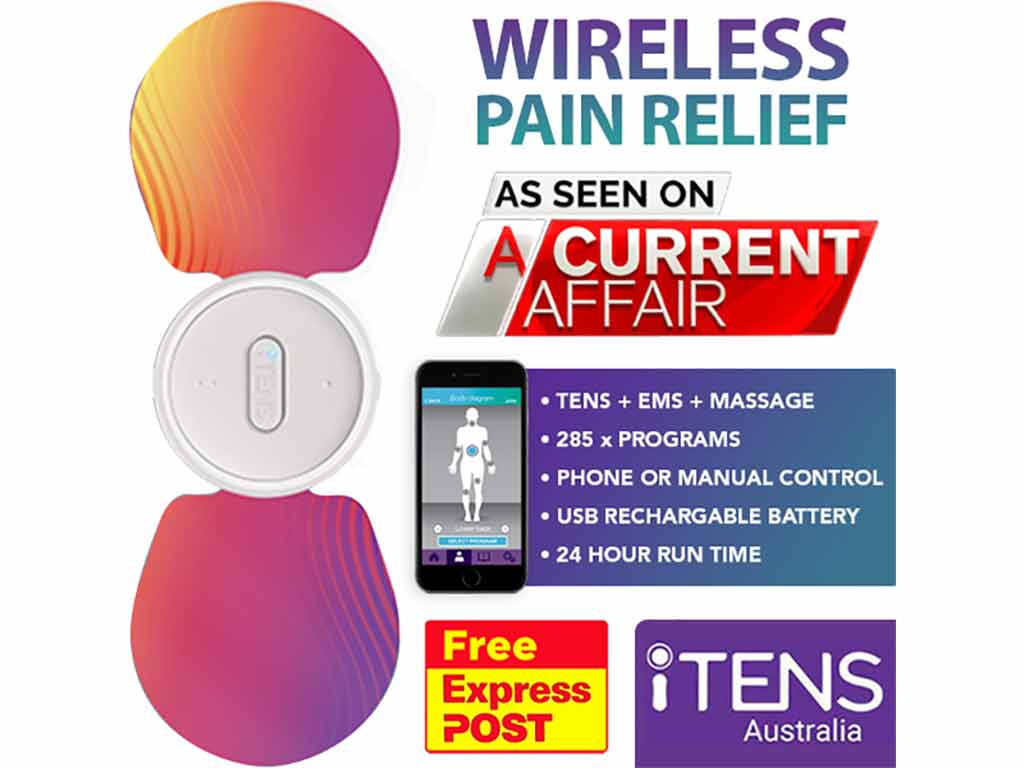
Transdermal electrical nerve stimulation is a type of electrotherapy that can alleviate pain by applying electrodes externally on the skin. It works by blocking pain signals sent to the brain, triggering the release of endorphins, and improving blood flow to the area. This treatment can manage both short-term and long-term pain conditions, such as arthritis, muscle strains, and nerve pain. It is a non-invasive and drug-free option for pain relief that many people find effective.
What is Transdermal Electrical Nerve Stimulation?
Transdermal electrical nerve stimulation is a method of pain relief that involves delivering low-level electrical currents through the intact surface of the skin using a portable device. The device typically consists of a control unit and sets of electrodes. The adhesive electrode pads send electric currents to stimulate the peripheral nerves to reduce pain in adults. Moreover, there are two types of transdermal electronic devices that people can use: standard and wireless.
A standard device has a handheld push-button remote and lead cables connecting to the electrode pads. Meanwhile, a wireless device utilises Bluetooth technology to connect to a smartphone app. It is popular among users who prefer convenient and on-the-go pain management. Nevertheless, both types deliver adequate electric stimulation.
The electrode patches come in various sizes and shapes, allowing them to be interchangeable. This flexibility facilitates fitting onto different body areas and ensures the delivery of appropriate levels of active stimulation. Moreover, the pads adhere securely to the skin without penetration or causing lasting marks. It is worth noting that electrical stimulation is not a cure for pain but only provides symptomatic relief of pain.
Brief History
- 1950s: Clinical trials with transdermal e-stimulation for pain management.
- 1960s: Advancements in electrode design and technology for more precise electrical current delivery.
- 1970s: Introduction of Transcutaneous Electrical Nerve Stimulation (TENS) devices for pain relief.
- 1980s: Refinement of TENS devices for increased portability and customisation.
- 1990s: Expansion of transdermal e-stim applications to include muscle therapy and stress relief.
- 2000s: Integration of wireless technology into transdermal electric current devices for enhanced mobility.
- 2010s: Development of wearable transdermal e-stim patches.
- Present: Ongoing research explores new applications for transdermal e-stim, such as in sports performance enhancement and neurological rehabilitation.

Mechanisms of Action Behind Transdermal Electrical Nerve Stimulation
Transdermal electrical nerve stimulation sends electrical impulses through electrode placement on the skin. These impulses produce two general responses from the body, particularly the central nervous system. The first method is based on the Gate Control Theory of Pain. During electrotherapy, the pain gate mechanism in the spinal cord closes. Therefore, it inhibits the transmission of pain signals to the brain.
The second approach entails stimulating the production of endorphins. Electrical impulse devices enable the body to generate increased levels of endorphins, which are hormones capable of alleviating pain and promoting general well-being. Endorphins bind to opioid receptors, inhibiting the transmission of pain signals. They are also known as natural painkillers as they have similar effects to morphine.
Furthermore, electric nerve stimulation has a positive impact on the circulatory system. The electrical pulses or mild vibrations boost blood circulation in the affected area. Hence, this helps reduce inflammation, relax the muscles, and promote faster recovery of damaged tissues and sensory nerve regeneration.
Benefits of the Therapy
Transdermal electric stimulation offers notable benefits. Firstly, it is non-invasive, meaning it does not require any needles or surgery. Secondly, it provides personalised pain control through adjustable settings, such as pulse intensity, pulse frequency, and pulse duration. Thirdly, electrical devices are cost-effective. It minimises the need for regular therapy sessions or pain clinic visits.
Fourthly, transdermal machines are drug-free, making them non-addictive and safe for long-term use. Lastly, they are portable. Thus, this makes it more convenient for individuals to manage their painful conditions on the go, whether at work, during travel, or while engaging in physical activities.

Types of Pain Treated with Transdermal Electrical Nerve Stimulation
Transdermal electrical nerve stimulation can help manage a wide range of conditions. Firstly, acute pain. It typically lasts for a relatively short period. These include labour pain, postoperative pain, primary dysmenorrhea, mechanical neck pain, and muscle strain. Secondly, chronic pain conditions. They persist over a longer period, lasting for more than six months. Examples of chronic conditions include rheumatoid arthritis pain, bursitis, and fibromyalgia.
Thirdly, musculoskeletal pain. It refers to discomfort or pain that arises from the muscles, bones, joints, ligaments, tendons, and other connective tissues. Fourthly, neuropathic pain. It is a pain condition from damage or dysfunction to the nervous system. This condition includes diabetic neuropathy, phantom pain, and peripheral neuropathy.
It is important to note transdermal electric nerve stimulation for the treatment of pain is not advisable for people with cancer pain, epilepsy, blood clots, and heart diseases. Additionally, individuals with cardiac pacemakers should avoid using electrotherapy as the electrical stimulation may interfere with the implanted device. Moreover, electric nerve stimulation is not suitable during pregnancy except in the early stage of labour.
Are There Potential Side Effects?
There are some potential side effects associated with transdermal electrotherapy. For instance, skin irritation. Some people might experience redness, itching, or discomfort at the site of application. Healthcare providers advise patients to avoid the application of electrodes on broken skin to prevent skin irritation. They may also recommend using hypoallergenic electrode pads.
Additionally, individuals may experience muscle spasms during electrotherapy. They can happen when the electrical stimulation triggers the muscle to contract too forcefully. Moreover, the electrical stimuli from transdermal stimulators can interfere with metallic implants, raising the muscle tissue temperature to damaging levels. If side effects persist, it is advisable to seek medical help.
Conclusion
In conclusion, transdermal electrical nerve stimulation is a method for relieving pain by sending low-level electric currents through the skin. It works by closing the pain gate in the spinal cord and triggering the release of endorphins, natural painkillers. TENS also improves blood circulation, which aids in reducing inflammation and promoting healing. While it does not cure pain, it offers effective symptomatic relief. Whether using standard or wireless devices, transdermal electric stimulation provides convenient pain management for many users.
Transdermal electric therapy helps manage various types of pain, including acute, chronic, musculoskeletal, and neuropathic pain. Additionally, it is non-invasive, drug-free, customisable, and cost-effective. The device is also portable, allowing users to manage their pain conveniently wherever they go. Despite its effectiveness, caution is advised for certain medical conditions, such as cancer pains, epilepsy, and heart diseases. Overall, transdermal electric therapy can enhance the quality of life for many individuals.




















